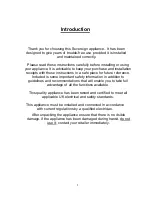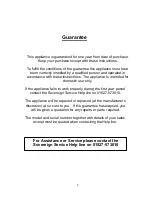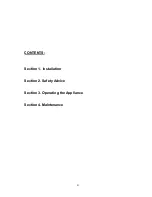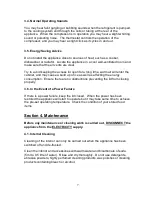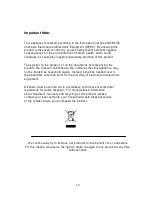
8
4.2. External Cleaning
Wash the outer cabinet with warm soapy water. Do NOT use abrasive
products. There may be sharp edges on the underside of the product, so care
should be taken when cleaning. Once or twice a year dust the rear of the
appliance and the compressor at the back of the appliance, with a brush or
vacuum cleaner, as an accumulation of dust will affect the performance of the
appliance and cause increased energy consumption.
4.3. Defrosting
It is advisable to carry out de-frosting when your frozen food stocks are minimal.
Any frozen food that you do have inside the appliance should be wrapped in
thick newspaper or stored in a cool bag whilst carrying out the defrost operation.
If ice build up inside the appliance exceeds 3-5mm, switch off the appliance and
leave the lid open and allow the ice to melt.
Do not use sharp objects to
scrape the ice away.
Clean and dry the interior, close the lid and turn on the
power to the appliance. When the power has been restored the appliance will
start to operate but it may take some time to achieve the pre-set operating
temperature.
4.4. When the appliance is not in use
When the appliance is not in use for long periods, remove the contents,
disconnect from the electricity supply and clean the appliance, leaving the lid
open until you wish to use the appliance again.
4.5. What to do if something goes wrong
Before contacting our service help line, check the following points:
There is no power to the appliance:
Check there is not a power cut
Check there is power to the electric socket/appliance
Check the fuse in the plug (Must be 13 amp)
The compressor runs continuously:
Is the lid closed correctly?
Have large quantities of food recently been added to the appliance? – if
yes, allow the interior temperature to recover
Has the appliance lid been opened frequently? – if yes, allow the interior
temperature to recover


